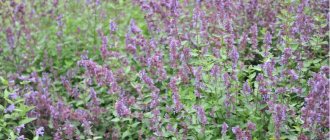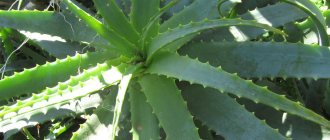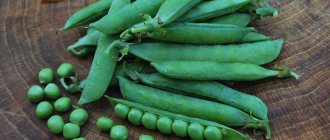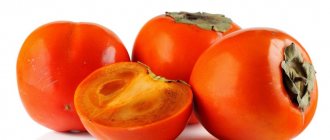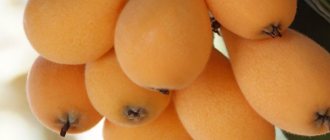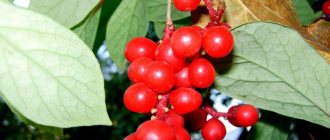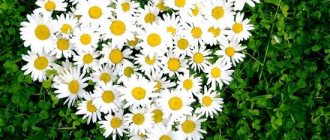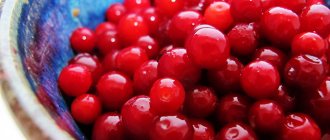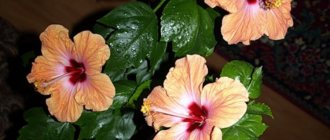Walking through shady forest areas in search of mushrooms and berries, one often finds a plant carpeting the soil under one’s feet. The shiny, attractive leaves, sometimes with marbled veins, look very beautiful. Local residents know that this is hoofed grass, (lat.) Asarum europaeum), the healing properties of which are used in folk medicine. Preparations based on the extract can be purchased at the pharmacy. Hoofweed is conditionally poisonous, so we carefully study the medicinal properties and contraindications of the natural healer.
What does a hoof look like?
Clefthoof, asarum, or hoofweed (Asarum) is an evergreen plant from the Kirkazon family with valuable decorative and medicinal properties. It has a creeping branched stem that rises no more than 15 cm above the ground, grows profusely and forms a dense green carpet on the soil surface. The photo and description of the European hoofed grass shows that its leaves are leathery, whole, heart-shaped or kidney-shaped, located at the tops of the shoots.
Clefthoof buds reach 10 mm in diameter
The plant enters its decorative period in April and May and bears single bell-shaped flowers, brown-green on the outside and brown on the inside. The fruits look like hexagonal boxes with numerous small seeds.
Important! European hoofweed is a plant whose seeds are spread by ants, which is a rather unusual feature.
Where and how does it grow
Clefthoof is very widespread throughout the world. You can see it not only in its homeland, in Africa and Western Asia, but also in North America and Central Europe. The European ungulate grows on the territory of Russia; it is found in the middle zone and in the south of Siberia, as well as in Altai. The perennial prefers fertile soils rich in humus and shaded areas; it often chooses coniferous and mixed forests, the lower tier of aspen and birch forests for growth.
Clefthoof is a valuable plant. In many Russian regions it is listed in the Red Book, for example, in Altai, Karelia, Rostov and Kemerovo regions.
Appearance and structure
The culture reaches a height of only 10 cm, has a small stem with two or three heart-shaped wintering leaves. These smooth, polished, dark leathery leaves resemble a horse's hoof, and the crisp white veins create an attractive pattern. Below they have a lighter shade and are covered with fine hair.
Appearing in the spring, after the flowering of the hoofed grass, they decorate the plant all year round. Even under the snow they retain a green appearance, but with the onset of warmth next year they begin to die off, being replaced by new, young ones.
The groundcover blooms in May, but often goes unnoticed. A single shaggy flower of a dirty purple hue appears from the leaf axil and is located near the ground. In July, a capsule fruit appears with numerous seeds, spread by ants.
Over time, the rhizome forms a large clump, which creates a carpet effect, expanding with age.
Features of cultivation
In nature, the crop grows in the shade on fertile, moist soils and is often found in the vicinity of spruce, alder and hazel. Prefers light soils and is undemanding to acidity
During the dry summer period, it is important for moisture-loving grass to be properly watered. Organic fertilizers will also come in handy.
Otherwise, the plant demonstrates the enviable unpretentiousness of a wild-growing ground cover.
It is not afraid of diseases and pests, since the essential oils included in its composition repel uninvited guests
However, during the period of seed ripening, it is important to be prepared for the appearance of a considerable number of ants that spread them. Don’t forget that hoofweed is a plant that likes to crawl from one place to another.
And having planted it in one area of the garden, after a few years you can be ready to see this glossy carpet in another area.
Reproduction
Propagated by seed and by dividing the bush. Sowing is carried out immediately after collecting the seeds or in the spring after three months of stratification at 0 +5 ° C. At a temperature of +18 °C, seedlings appear after 1-4 weeks. Bush division is convenient to use if the hoof is taken into the garden directly from the forest
In this case, you can simply dig up a plot, paying attention to the quality of the rhizome and a sufficient number of established shoots
Application
It is difficult to list all the areas in which coffin flowers are used. The plant is valuable for its chemical composition and is actively used in pharmacology and folk medicine.
It is important to remember that it contains toxic substances, so self-treatment without medical advice can be deadly. The culture has long been used in the treatment of alcoholism, as a green dye, and was even actively used in magical practice.
Nowadays, hoofed grass is valued primarily as a plant that can transform landscape design.
Like other ground cover plants, hoofed grass will be an excellent background for other ornamental crops and can be used to combine different groups of plantings into a single composition. It looks attractive when planted with early spring flowers, especially scillas, colchicum, white flowers, as well as ferns, rosemary and other shade-tolerant crops with leaves of interesting shapes or colors. It also looks self-sufficient in mono-plantings, for example, under shady trees.
Varieties
The plant is represented by several popular varieties. All of them have useful properties and look attractive in summer cottages.
Intermediate
Intermediate hooffoot (Asarum intermedium) is a relict species of herbaceous plant. Reaches about 15 cm in height, blooms with purple-brown buds, green leaves live for 14 months and are stored for the winter. The plant pollinates on its own, but its seeds are distributed by ants.
The intermediate ungulate is found mainly in the Western Caucasus and Transcaucasia
European
The most valuable from the point of view of medicinal properties, European hoofed grass (Asarum europaeum) grows in the central part of Russia and Western Siberia. It is a toxic plant, but is used as an anthelmintic and anti-inflammatory agent. European ungulate root extract is used in the treatment of scabies and skin lesions.
European ungulate has a distinct peppery odor.
Siebold's Hoof
Siebold's hoofweed (Asarum sieboldii) differs from other species in having a shortened root and a height of about 20 cm. It sheds its leaves in the winter and bears flowers in mid-spring; they are purple in color. Although this type of plant is not evergreen, it is very popular among gardeners.
The diameter of Siebold's ungulate flowers reaches 1.5 cm
Caudate
Tailed hoof (Asarum caudatum) is an evergreen plant up to 25 cm tall. The leaves of the perennial are smooth and dense, with well-defined veins, up to 15 cm wide. The buds are brown-violet in color, with narrow petals and a light throat. The species blooms later than others, at the end of May and until mid-June.
The tailed hoof can withstand frosts down to - 20 ° C
Description of the plant
European hooffoot is a low herbaceous plant, perennial and evergreen. It received the name “hoof” for its unusual leaf shape, reminiscent of a horse’s hoof. These round, bright green, shiny, leathery leaves, which remain green all year round, are the main decoration of the plant.
The height of the hoof plant does not exceed 15 cm. Its shoots spread and take root - this is how a compact bush is obtained, gradually occupying an increasingly larger area. A “cap” is formed, and then a “mat” of this plant. And even the Latin name azarum in Greek means carpet. Its rhizomes are also creeping, cord-like.
Clefthoof flower
Flowering usually goes unnoticed. The inflorescences can be seen if you only specifically look under the leaves. From the leaf axil on the peduncle appears a single flower of a dirty dark red color - shaggy, bell-shaped with a diameter of about 1 cm. There are many such inflorescences in the curtain, but they are completely invisible - they hide under the leaves and are located near the ground.
The ungulate blooms in May, and in July a fruitlet is formed - a box in which the seeds ripen. They are taken away by ants, and the plant spreads with the help of seeds.
Application in landscape design
In garden plots, hoofweed is used mainly to form a beautiful soil cover. A low plant can act as a spectacular dark background for ferns and roses, and fits well with any shade-tolerant perennials.
In landscape design, the hoof is used to form the lower tier
The crop is often planted in flower beds around spreading trees that block the bright sun. The plant remains decorative throughout the year; green leaves emerge directly from under the snow and most often retain their bright color when the autumn cold sets in.
Growing
Growing hoofweed is quite simple. It grows well in shady places.
Flowering is not picky about soil composition. It is best to plant it on soils that are full of lime. And also, this culture loves loose and moist soil.
The plant can reproduce using underground root parts. You can also use seeds and part of the stems.
Gardeners pay little attention to this plant. All this is due to the appearance, which is very inconspicuous. Coffin is mainly used due to the fact that it is unpretentious in care. And also, it can be used for medicinal purposes.
You need to start seedlings from late spring to late summer. To do this, you need to use a bush, or rather its division.
Hoofweed can be propagated using seeds. It is best to plant this crop vegetatively. It is necessary to separate the daughter sections of the root system when the old ones die off.
Planting and caring for hoofs in open ground
Clefthoof is a fairly hardy plant. Growing the crop usually does not cause problems, but you need to know the basic rules.
When and how to plant
It is recommended to plant the hoof plant in the ground from May to August. A place for the perennial is selected that is well shaded, with loose and moist soil and a neutral acidity level. The plant develops without problems on loams and sandstones with the addition of peat and humus. It also feels good in partial shade, but it is better not to plant it in bright sun.
Shortly before the plant takes root, the selected area is dug up and, if necessary, the soil composition is improved. For the hoof plant, prepare a small hole approximately twice the size of the roots, after which the seedling is buried in the soil and immediately watered abundantly.
Features of cultivation
The coffin has low care requirements. During hot months, you need to carefully monitor soil moisture and water the plant regularly. The perennial is fed only once a year at the beginning of summer; organic fertilizers should be used. From time to time it is recommended to weed from weeds that can take away moisture from the hoof.
The crop does not need pruning or shaping; it grows slowly and, moreover, does not form tall bushes. If the hoof grass has spread greatly throughout the area, it is enough to simply use the division method and transplant parts of the perennial to another place.
A flowerbed with hoofed grass can be mulched with dry peat or wood chips
Most representatives of the plant demonstrate good frost resistance and do not need winter shelter. Species sensitive to cold can be protected from snow and cold with fallen leaves or spruce branches.
Reproduction
Clefthoof grass reproduces by three main methods:
If it is necessary to plant a plant on the site in the current season, it is recommended to use shoots. They usually appear in mid-summer. They are separated from the mother bush and planted in a new place.
The bush is divided at the beginning of spring or with the onset of autumn. The bush is dug up and divided into parts. The resulting divisions are immediately planted in open ground and watered with a moderate amount of water.
Medicinal properties of European coffin
Ornamental ungulate is valued for its many medicinal properties. The plant is used:
- for heart and vascular diseases;
- for swelling;
- for migraines;
- with hepatitis;
- for poisoning and intestinal disorders;
- for colds and bronchitis;
- for impotence and gynecological diseases in women;
- for radiculitis and neuroses;
- for intestinal parasites;
- for eczema and scabies;
- for kidney diseases;
- for wounds, burns and insect bites.
Most of all, hoofed grass is known as an effective remedy against alcoholism. The plant not only creates an aversion to alcohol, but also equalizes the psychological state of a person struggling with addiction.
Use in folk medicine
The plant can be found in many home remedies. Traditional medicine uses it:
- to narrow blood vessels and raise blood pressure during hypotension;
- for expectoration when coughing;
- to combat inflammation and bacterial processes;
- to calm stress and neuroses;
- to relieve fever;
- to relieve pain and spasms.
Coffin has laxative properties and is used to relieve constipation. The plant can be used to improve bile production.
Recipes for decoctions and tinctures
Aqueous and alcoholic medicinal preparations can be prepared based on the medicinal plant coffin. Traditional medicine offers several proven options.
Decoction
A healthy decoction is prepared from the leaves and rhizomes of European ungulate. The recipe looks like this:
- dry plant raw materials are crushed in the volume of a large spoon;
- pour 250 ml of boiling water;
- simmer in a water bath for half an hour over low heat;
- When ready, filter and top up with clean liquid to the initial volume.
You need to drink a decoction of the plant in minimal dosages - half a small spoon up to three times a day. The product is beneficial for gastrointestinal disorders and diarrhea.
Coffin decoction can be used externally as a lotion for skin inflammation and eye irritation
Tea
Coffin tea is brewed according to the following algorithm:
- 2 large spoons of dry plant roots pour 500 ml of water;
- after boiling, boil for 30 minutes over low heat;
- cool the product and filter.
The prepared tea from the plant should be divided into four equal portions and taken on an empty stomach during the day for digestive disorders and inflammation.
Important! You can continue therapy with hoof tea until the condition improves, but not longer than a month without interruptions.
Tea with the coffin plant helps with kidney ailments
Coffee
An unusual recipe for coffin for alcoholism suggests making coffee using herbs. The drink is made from regular grains or instant powder. But to 50 ml of the finished product you need to add 1/4 of a small spoon of crushed plant root.
Coffee is taken to treat alcoholism; you need to drink it every other day just once a day.
Coffee with the hoof plant creates an aversion to alcohol
European cleft tincture
A tincture with strong emetic properties is made from the root of the plant. The recipe looks like this:
- 100 g of dry root is crushed;
- pour 1 liter of vodka into the raw material;
- insist in a dark place for two weeks.
They take a plant-based remedy to treat alcohol addiction. The tincture is drunk with regular alcohol or clean water. Severe nausea occurs almost immediately, which ultimately develops an aversion to alcohol in the patient.
Clefthoof tincture is consumed in volumes of no more than 30 ml
Rules of application
Traditional medicine offers a variety of uses for the herb. Since the plant is classified as poisonous, when using any product you need to take tiny dosages.
How to take European hoofweed for alcoholism
There are many recipes with the herb hoofweed for alcoholism. One of the most popular looks like this:
- the dry root of the plant is ground into powder;
- mixed with green walnut peel in a ratio of 1:2;
- pour 15 g of the resulting mixture into 2 liters of wine;
- infuse the product in the dark for two weeks.
The finished medicine is filtered and given to the patient 30 ml per day.
Another recipe allows therapy to be carried out covertly, even if the alcoholic himself does not want to begin treatment. The diagram looks like this:
- crushed plant root in the amount of 15 g is poured into 250 ml of water;
- boil for five minutes over low heat;
- keep covered for an hour.
The cooled product is added in the amount of a large spoon to 200 ml of alcohol. Reviews of the root of the coffin for alcoholism claim that the medicine causes a quick and strong gag reflex. Therefore, usually after the fifth dose of the drug the patient decides to give up alcohol.
It makes sense to treat alcoholism with the help of a plant only in combination with strong drinks. Reviews of European hoofed grass note that drinking the herb with tea while simultaneously voluntarily giving up alcohol will not have an effect.
Important! When treating alcoholism, overdose should not be allowed. The coffin contains the glycoside asarone; in excess quantities it can cause vascular spasm or a heart attack.
At high temperature
Clefthoof root helps reduce fever and eliminate fever during colds. You need to prepare the following:
- 10 g of dry plant roots are poured with a glass of water;
- boil over low heat for ten minutes;
- cool and filter.
For treatment, you need to add a small spoon of the product to a glass of warm milk, and also add 5 g of honey and butter. Take the drug 80 ml three times a day.
For intestinal diseases
For indigestion and diarrhea, the following decoction of common hoofed grass helps:
- pour a large spoonful of dry plant root into 250 ml of milk;
- bring to a boil over low heat;
- boil for ten minutes;
- cool and pass through cheesecloth.
You need to drink a decoction of the plant, a small spoon twice a day until the condition improves.
The roots of the coffin plant have astringent properties.
Advice! You can use the product after food poisoning to quickly eliminate the consequences.
For headaches
You can use hoofed grass externally for severe migraines. The following infusion is usually used:
- the dry roots of the plant are properly crushed;
- measure out 1/4 small spoon of raw materials;
- pour a glass of boiling water;
- leave covered for an hour.
After the period of time in the warm solution has expired, you need to moisten the gauze and apply a compress to your forehead. Coffin will help relieve vascular and muscle spasms and eliminate headaches.
For scabies
The juice of the herb helps with scabies, itching and skin irritation. Fresh leaves of the plant are crushed and pressed through cheesecloth to obtain a clear liquid. Soak a cotton pad in the juice and wipe the affected area. The procedure is carried out over four days, and it needs to be repeated only once a day.
From ulcers and wounds
For wounds, ulcers and healing burns, homemade ointment based on coffin has a beneficial effect. They do it as follows:
- measure out 1/4 small spoon of dried plant root;
- mixed with 100 g of animal fat or petroleum jelly;
- bring to homogeneity and put in the refrigerator to harden.
Once a day, the product must be applied to the sore spot. You can also use ointment from the plant for joint ailments to relieve inflammation.
Important! To prepare the drug, you can also take vegetable oil, but in this case the product will be less convenient to apply to the skin.
Compound
Due to its composition, rich in valuable substances, the raw material of the cleftfoot plant is used for the manufacture of pharmaceuticals in many European countries (Poland, Sweden, Germany, the Netherlands). The plant includes the following elements and compounds of medicinal interest:
- tannins, bitter substances, glycosides;
- diazoron, asarone, bornyl acetate, 1-pinene;
- asaryldehyde;
- methyl eugenol, azarin alkaloid, eugenol;
- tannins, bactericidal substances;
- eugenol, kaempferol;
- essential oils;
- mineral salts of calcium, potassium, quercetin;
- silicalcite, resins, starch, mucus, sugar;
- coumarin, flavonoids;
- organic acids.
Beneficial features
Cardiac glycosides, kirkazonic acids, tannins (resinous and tannins), flavonoids provide choleretic and diuretic properties, adrenaline-like, emetic and laxative effects, antipyretic and sedative effects of the drug. Galenic components from rhizomes are used as an expectorant, diuretic, and emetic.
An infusion of leaves is used for diseases of the stomach, kidneys and liver. A decoction of them is drunk for heart disease, alcohol addiction, mushroom poisoning, emotional instability, headaches, as a diuretic, and for jaundice. A decoction of the roots and rhizomes of the plant is used as a diuretic for kidney diseases. A decoction of grape syrup enhances potency.
Dried and ground to a powder, the roots and rhizomes of the hoof are used to treat the common cold. The effect is achieved due to the bactericidal substances contained in the plant. It is recommended to apply fresh and pre-crushed leaves of the coffin to abscesses, and a tincture of the leaves in vinegar can be used to wipe areas of the skin affected by scabies.
Application
The pharmaceutical market presents a good selection of herbal medicines, which include raw materials from herbs, which are widely used in domestic and foreign medicine. Coffin is one of the plants officially recognized by pharmaceuticals. Herbalists and traditional medicine healers use European hooffoot for alcoholism, but in addition, the plant can be used in the treatment of the following diseases:
- male infertility, loss of potency, decreased sperm count;
- infection with round or flatworms, helminths, and other parasites;
- in dermatology: eczema, peeling of the skin - an ointment based on the root of the coffin is used;
- lung cancer, high blood pressure;
- cardiac edema, arrhythmia;
- oligomenorrhea;
- jaundice, asthma, cough;
- dropsy of the brain, malaria;
- pneumonia, purulent pneumonia;
- cholelithiasis;
- neurotic joint pain, arthritis;
- migraine, insomnia.
In pharmacies you can find dried roots and herbs; blyakotnik is included in some drugs, for example, drops for alcoholism or the herbal mixture “Stopal”. A tincture from the leaves of the plant is part of the “Akofit” remedy, used for neuritis and radiculitis. It is advisable to use the product under the supervision of a doctor and with permission, because the plant is very poisonous. Uncontrolled use can lead to severe poisoning. It is recommended to strictly adhere to the dosage and not exceed it.
Restrictions and contraindications
The use of coffin herb can cause both benefit and harm. The plant contains a large number of valuable components, but it also contains toxic substances. It is necessary to avoid consuming perennials in any form:
- during pregnancy;
- during lactation;
- for hypertension and heart failure;
- for chronic kidney diseases;
- for stomach ulcers;
- for individual allergies;
- with internal bleeding;
- for acute pancreatitis and gastritis;
- during menstruation.
Children under 18 years of age and the elderly should not take teas, decoctions and tinctures. It is forbidden to use the hoof if there is severe physical exhaustion.
During treatment with the plant, it is very important to comply with the minimum dosages specified in the recipes. Exceeding the permitted volumes causes side effects such as nausea, diarrhea, migraines, uncontrolled vomiting and dehydration.
Collection and procurement of raw materials
You can collect coffin for medicinal purposes almost throughout the year. The leaves of the plant are harvested during the flowering period, in mid-May. Roots are dug even in winter, although it is best to do this in late autumn or early spring.
For treatment, raw materials are taken from healthy adult plants, the green parts are carefully trimmed with scissors. Harvesting is carried out on a dry and warm day. The raw materials must be immediately sorted out, thoroughly washed to remove dust and dirt, then cut into small pieces and placed on a baking sheet.
High-quality dried roots and leaves of the coffin should crumble in your hands
It is best to dry the hoof in the fresh air in a shaded place or in a well-ventilated room. You can also put the plant in the oven, but heat it up to no more than 50 °C. Too intense heat treatment leads to the destruction of vitamins in the coffin.
The harvested grass and roots are distributed into paper bags or glass jars and placed in a dark and dry place. The raw materials of the plant can be stored for a year, but it should be stirred from time to time to prevent mold from appearing.
Important! Fresh leaves and roots are not used for treatment, they are too poisonous. Proper drying reduces the concentration of hazardous substances several times.
European hoofweed: description and photo
This herbaceous plant, about 30 cm high, known by the Latin name Asarum europaeum L., gets its name from the interesting shape of the leaf, very similar to a hoof print. The dark green, leathery leaves of the hoofweed are beautiful and shiny in appearance. They are equipped with long petioles and sit in pairs close to each other on low stems that extend from a branched rhizome. It tastes like turpentine. When the ungulate grows, it completely hides the ground beneath it, sometimes forming a glossy forest carpet over a fairly large area. European hoofed grass blooms in May-June with small brown flowers resembling bells. They have a specific smell of camphor, so animals do not eat it. This evergreen grass is common in mixed and deciduous forests of Europe, the European part of Russia, Western Siberia, and the Far East, however, it is one of the endangered rare species. Clefthoof has many popular names associated with its healing properties: turpentine, earthen incense, hare leaf, fever herb, hoofgrass, hernia grass, emetic root, human ear, sickly, secret herb, wine, root, hairy herb, common grass, crippled grass.
Collection and preparation of European hoofed hoof
Rhizomes, roots and leaves of turpentine are common folk medicines. Leaves with petioles are collected in May, early summer during flowering, and rhizomes with roots - in early spring or late autumn. The raw materials can be dried, but mainly they are used directly for preparing tinctures and decoctions. The root of the coffin is used to prepare azar oil, which is mainly used in perfumery.
Useful and medicinal properties of European hoofed grass
The rhizomes and roots of turpentine contain tannins, mucus and essential oil, resins, coumarins, phytosterins, saponins, flavonoids quercetin and kempefol, caffeic, coumaric and ferulic acids, the toxic substance asaron, as well as eugenol, asaronic aldehyde, ornylacetate, bdiazaron and other substances . The plant has a diuretic effect. An infusion of the hoof rhizome is used for diseases of the liver, bladder, dropsy, jaundice, as an expectorant and emetic. An aqueous infusion of turpentine leaves promotes a significant constriction of blood vessels, increases blood pressure, and enhances cardiac activity. If you make the infusion strong, it will cause vomiting. An infusion of a mixture of roots and leaves helps with radiculitis, pulmonary-cardiac and pulmonary insufficiency. It is believed that tea from the rhizome of the coffin herb relaxes the intestines, stimulating digestion, and therefore can be used for liver diseases, gastritis, and hepatitis.
The use of European hoofweed in folk medicine
In homeopathy, a tincture is prepared from fresh rhizomes. It is used for nervous exhaustion, hot flashes, colds, and cold hands. As for doctors, they practically do not use the hoof, which cannot be said about traditional medicine. For example, in German folk medicine, a tincture of fresh rhizomes of the plant is used in small doses for asthma, nervous diseases, migraines, hysteria, and as an emetic. And in Bulgarian, a decoction of the plant is prepared for the treatment of scabies, washing festering wounds, and taken orally for diarrhea and headaches.
Folk recipes from European hoofed grass
There is a folk method for weaning a person from alcoholism - you need to unnoticed by the drinker to add a tablespoon of decoction of hoof rhizomes to a glass of vodka. This cocktail will cause severe vomiting and aversion to alcohol. Often this method is effective, but still turpentine cannot be used for self-medication, since it contains toxic substances. An uninitiated person who does not know how to calculate the dosage should not self-medicate.
Side effects and effects of European hoofweed
In case of an overdose, severe vomiting may occur, and there is a risk of damage to the stomach, intestines, gallbladder, liver and kidneys.
European undergrowth European syuznik European marigold Marigold bedstraw Fragrant black cohosh
Tags:
hooves European turpentine earthen incense hare leaf fever herb hoofhernia emetic root human ear ailing secret herb wine root hairy lilywood perpetual herb medicinal herbs folk medicine
